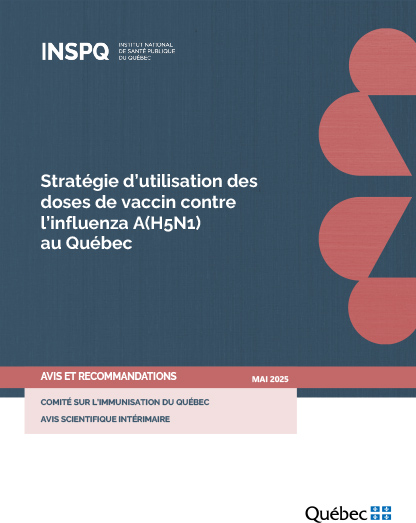Dose Strategy for Vaccination Against Influenza A(H5N1) in Quebec
Context
- Highly pathogenic avian influenza A(H5N1) is an emerging health threat in Quebec and abroad, especially for workers exposed to infected animals. There is no current evidence of human-to-human transmission.
- In early 2025, the federal government purchased 500,000 doses of the Arepanrix™ vaccine against influenza A(H5N1) American wigeon clade 2.3.4.4b.
- In this context, the Ministère de la Santé et des Services sociaux (MSSS) asked the Comité sur l’immunisation du Québec (CIQ): “What should be Quebec’s vaccine strategy for A(H5N1) […]?”
- The main objectives of a potential vaccination program would be to prevent serious illness and infections in specific workers at high risk of exposure to highly pathogenic avian influenza A(H5N1).
CIQ recommendations
- Take a shared decision-making approach, rather than implementing a broad vaccination program targeting farm workers and the hunting population, by offering the vaccine to:
- personnel working with the live virus (culture/isolate) and at influenza A(H5N1) vaccine production sites;
- veterinarians, technicians, and workers who perform necropsies on potentially infected animals, and diagnostic laboratory staff who are in contact with large numbers of potentially infected carcasses; and
- workers who regularly participate in the management of cases on multiple farms, particularly during bird culling or the cleaning and disinfection of buildings; wildlife rehabilitation staff; and workers who regularly come into close or prolonged contact with potentially infected animals or samples, according to the risk assessment carried out by the Direction générale de la protection de la santé publique of the MSSS.
- Offer two doses with a two-month interval. The minimum 21-day interval could be considered in the event of human-to-human transmission.
- Evaluate this influenza A(H5N1) vaccination, particularly in terms of vaccine safety, immunogenicity, acceptance among different populations, vaccine coverage achieved, and logistical issues observed.


